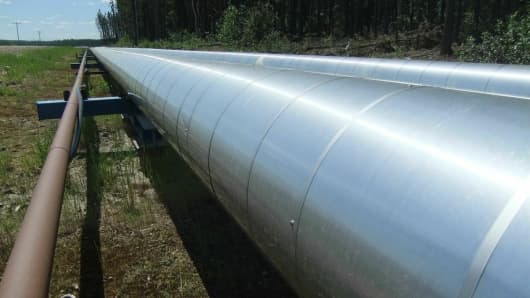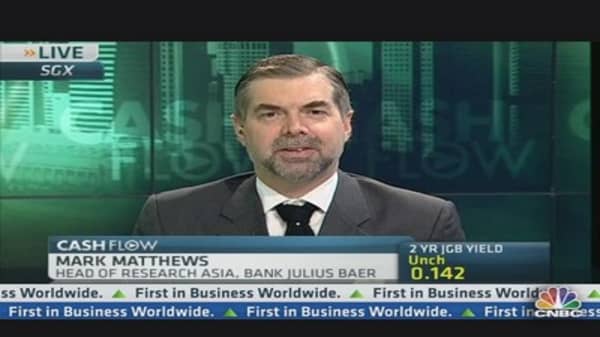Yet, this week despite the anti-government protests in Cairo's Tahrir Square, it was WTI (West Texas Intermediate, the grade underlying U.S. crude oil futures) that out-performed, while Brent saw a more muted reaction. Importantly, the price spread between the two benchmarks narrowed to $3.09 a barrel on Wednesday, the narrowest since December 2010.
(Read More: Oil Dips Towards $105 as Supply Concerns Ease
Why did U.S. crude futures attract the bulk of the buying interest this week?
Deutsche put it down to "ongoing tightening in WTI physical fundamentals" driven by an improvement in pipeline and rail networks which have helped to drain a glut of oil at the WTI delivery point at Cushing, Oklahoma. Plus, declining inventories in the U.S. Midwest (classified as 'PADD 2' by the government's Energy Information Administration) has also helped.
Combined, this week's outperformace of WTI against Brent and the related compression of the price spread "suggests that U.S. pipelines and lower Padd 2 and Cushing, Oklahoma, inventories are having more effect on the oil market today than events unfolding in Egypt at least for the time being," Deutsche strategists Soozhana Choi and Michael Lewis wrote in the report.
(Read More: Oil Bulls Bank on 'Goldilocks' Jobs Data)
For now at least, WTI seems to have the upper hand. That said, many market participants increasingly believe Brent crude is the more globally representative gauge while WTI - despite efforts to 'de-bottleneck' a glut of inland supply and pipe it to export terminals on the Gulf Coast - is still seen by many as a regional benchmark.
Dominic Schnider, Head of Commodity Research at UBS Wealth Management pointed out on Monday that Cushing inventories remain high, standing close to record levels, at 50 million barrels, and current pricing of the Brent-WTI spread needed to be higher to support the additional of new rail capacity to help drain the inventories.
"We need that railway capacity and it's not going to happen at the current price…not at $3, not at $4, I think for the rail capacity we need some $8 to $10," Schnider told CNBC Asia's "Squawk Box" on Monday.
"That's why second half, I do think that the spread is going to widen again. You're going to see an additional 1.2, 1.3 (million barrels per day) pipeline capacity to bring some of the crude away from Cushing to the Gulf coast. That will help more towards the end of the year and not in the third quarter."





